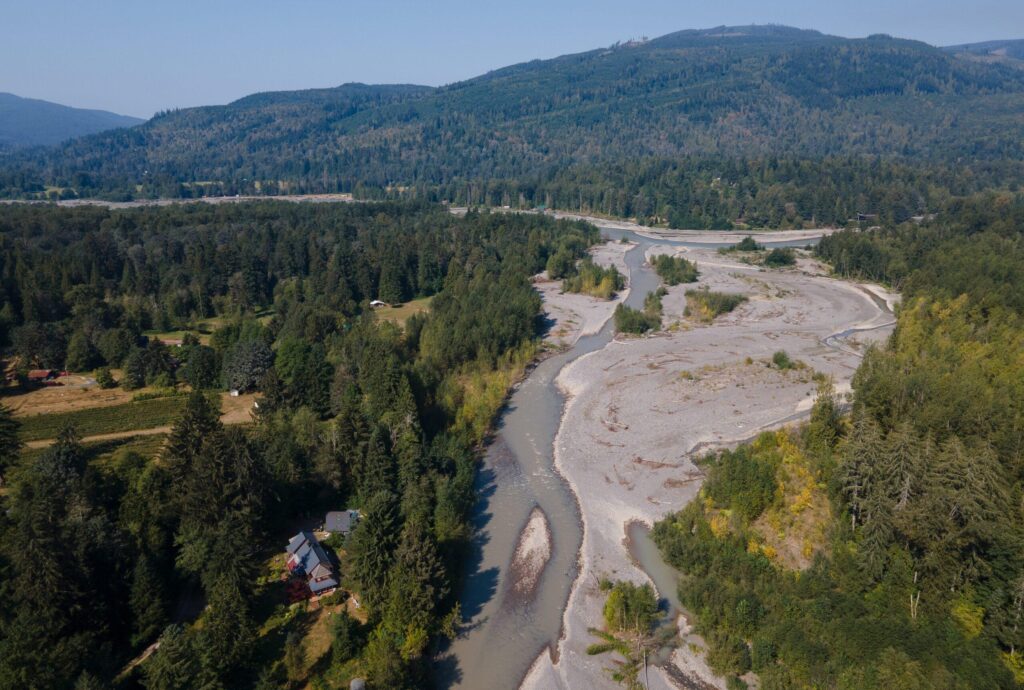Nooksack Water Rights Adjudication: Current Developments and Ongoing Challenges in Washington State
The Washington State Department of Ecology has recently published an updated report on the Nooksack River watershed’s water rights adjudication, a process that holds the potential to significantly alter water management practices in the region. With a history steeped in intricate legal and environmental challenges, various stakeholders—including agricultural producers, tribal communities, and environmental organizations—are closely observing these developments as they affect local populations and ecosystems. This update arrives at a pivotal moment when Washington is facing escalating water shortages alongside competing demands exacerbated by climate change. In this article, we explore the latest insights from the Department of Ecology, their implications for water users, and what lies ahead for this essential adjudication process.
Nooksack River Water Rights Issues Amid Environmental Challenges
The ongoing dispute over Nooksack River water rights is reaching a crucial juncture as various stakeholders convene to tackle pressing environmental issues. Local residents, conservationists, and government agencies are intensifying their focus on the river’s health—a critical factor for indigenous fish species and surrounding ecosystems. Key topics under consideration include:
- The effects of agricultural runoff on overall water quality
- Variations in river flow resulting from competing demands for water
- Approaches to sustainable management of this vital resource
As discussions progress, participants stress the importance of harmonizing water rights with ecological preservation efforts. The Washington State Department of Ecology plays a crucial role by facilitating conversations aimed at achieving fair solutions while safeguarding the ecological integrity of the Nooksack River.
During a recent public forum, numerous stakeholders shared compelling data regarding both water usage patterns and their environmental repercussions. This information highlighted that approximately over 80% of river flow is currently designated for agricultural and municipal purposes, leaving scant resources available to support ecological health or fish populations. The table below illustrates current allocations along with their respective impacts on local environments:
| Source of Water Allocation | Percentage Utilized | Main Environmental Consequence |
|---|---|---|
| Agricultural Use | 65% | Increased runoff leading to pollution issues |
| Municipal Use |
15% | Diminished stability in aquatic habitats due to fluctuating levels |
| Ecosystem Requirements |
20% |
Washington State Department of Ecology Reveals Key Insights and Next Steps
The Washington State Department of Ecology has issued an extensive report outlining its findings related to both the Nooksack River watershed’s conditions as well as its ongoing adjudication process concerning water rights. Central themes emphasize maintainingenvironmental integrity< / strong>, encouragingcommunity engagement< / strong>,and ensuring effectivewater resource management< / strong>. Several critical factors have been identified that must be addressed moving forward if equitable distribution among agricultural needs,municipal requirements,and ecosystem preservation is to be achieved: p >
- A rising demand for freshwater resources amid shifting climate conditions. li >< li >Significant threats posed against biodiversity within habitats surrounding Nook sack River. li >< li >Concerns about sustainability regarding current practices involving existing allocations.
- ul >
The department’s future strategy includes fostering collaboration among diverse stakeholders such as local tribes,farmers,and conservation advocates.A key initiative will involve establishing aWater Management Advisory Committee< / strong>,which aims at promoting continuous dialogue while innovating new strategies focused specifically around conserving precious freshwater supplies.Additionally,the following actions have been prioritized: p >
Action Items< / th >< th >Projected Timeline< / th > tr > tbody > table > Strategies For Sustaining Water Use And Preserving Nature In The Nook Sack Region
To promote sustainable utilizationof freshwater while protectingthe natural balanceof ecosystems withinNook sackRiver system,several strategies shouldbe prioritized.Key recommendations include:
- Create ComprehensiveWater Management Plans: strong>Create detailed plans emphasizingconservation techniques tailoredfor agriculture,residential areas,and industrial sectors. li >
- < strong>Add Watershed Monitoring Initiatives: strong>Cultivate regular monitoringof both qualityand quantityto track changes proactivelythat may impactnatural habitats. li >
- < strong>Pursue Riparian Zone Restoration: strong.Involve community membersin restoringgreen beltsalongriverbanksaimedat stabilizingsoilwhile supportingbiodiversity. li >
- < str ong>Cultivate Public Awareness Campaigns: str ong.Launch educational initiativesaimedat informingresidentsaboutthe significanceof conservingwaterresourcesandunderstandinginterconnectedlocalecosystems./ l i />
Additionally,collaborationamonglocalgovernmentstribalentitiesandenvironmentalgroupsis essentialforunifiedapproachresource management.A pilot programcouldbe establishedassessfeasibility:
Strategy< // b r/>< th style= "font-weight:bold;">Expected Outcome
th />IncentivesforAdoptingWater-SavingTechnologies
b r/>/tr /
InteragencyCoordinationWorkshops
b r/>
/tr /CommunityDrivenRestorationProjects
b r/>/tr />
“Conclusion” h2>“The latest updatesregardingNook sackadjudicationsignify substantialprogressinbalancingneedsbetweenwater rightsholderswithenvironmentalprotectionsacrossWashingtonState.AsDepartmentEcologycontinuesnavigatecomplexitiessurroundingthiscriticallegalprocessstakeholdersfromallsectorsurgedremainengagedandinformed.OutcomesadjudicationswillnotonlyshapefuturemanagementresourceswithinNook sackwatershedbutalsoestablishimportantprecedentssimilarcasesstate.AsdevelopmentsunfoldcommunitiesinterestedpartieskeptupdatedthroughDepartmentEcologyensuringtransparencycollaborationcriticalmatter.”
- Create ComprehensiveWater Management Plans: strong>Create detailed plans emphasizingconservation techniques tailoredfor agriculture,residential areas,and industrial sectors. li >
